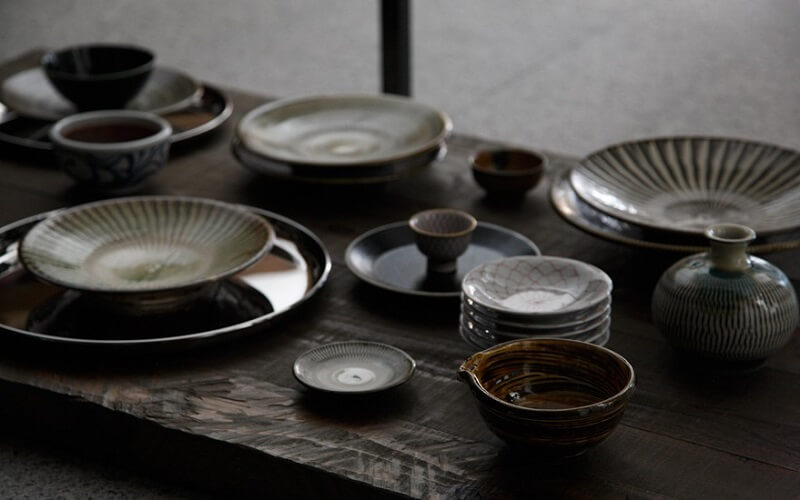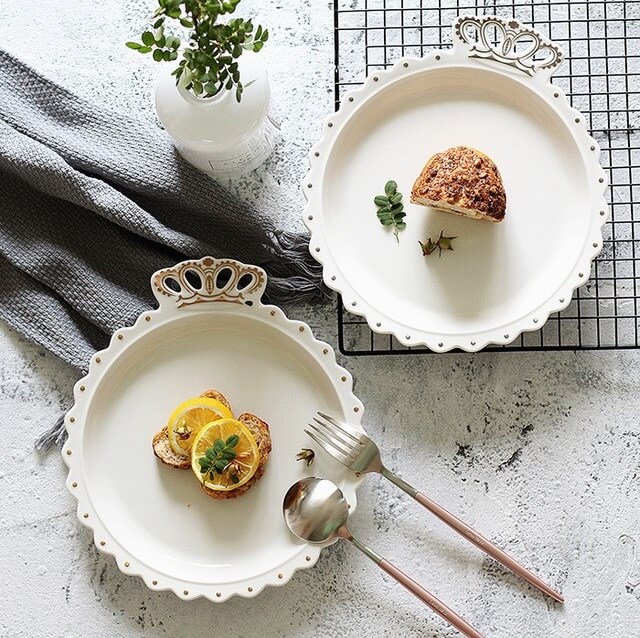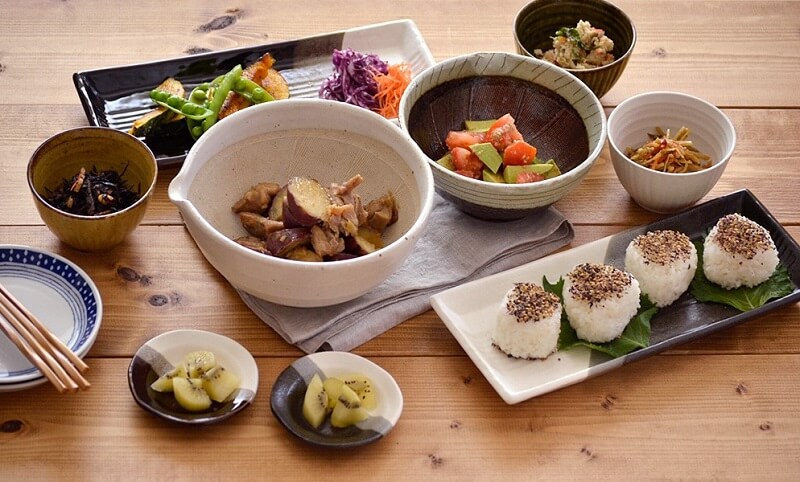Japanese Cuisine, Japanese Pottery
Is the difference between Japanese and Western tableware just about their looks?
Have you ever wondered what the difference between a western tableware and Japanese tableware is? Maybe you haven’t. I’d say you haven’t, because I’ve seen people, including myself, use plates and bowls interchangeably for any sort of dishes from Korean to French (sorry if you aren’t one of those people, but still, it’s a fun read so please don’t stop reading). It’s no big deal if you want to decorate filet mignon on a Koi fish patterned pottery, it’s still fancy, right?
But no. Whether the looks of it fits the menu or not isn’t as important. There is an external and non-external difference between Japanese and Western tableware, and for a very specific reason.

(Image: muji.net)
Table of Content
Materials Used
The biggest difference between Japanese tableware and Western tableware is in its material.
Western tableware is made from soil which includes feldspar as its main components. Feldspar is a sort of mineral that is often used to make items such as glassware, and it is much harder than lacquerware or potteries. This is because Western dishes are mostly eaten with knives and forks, which can damage the plate if the surface isn’t strong enough. In order to keep the dishes clean and scratch-less, the Western plates are made out of strong materials such as that of porcelain.
On the other hand, Japanese plates and bowls are often made of wood that is later layered with lacquer to create lacquerware, or pottery clay that are baked in low temperature heat. This is a result of a specific Japanese food culture, which is to hold the dishes in their hand. Sometimes even putting their mouth directly to the plate. Because we make contact with the plates or the bowls directly with our hand and our mouth, they have a much softer, and familiar touch.
Weight
For the same reason, Japanese tableware is much lighter than that of Western dishes. They have to be light enough so that we can hold them in one hand with chopsticks on the other. Western dishes, however, are made to be placed on the table and should not be easily moved. That is why they are much heavier than Japanese dishes.
Harmony
Both Japanese and Western meal setting has its own sense of unity.

(Image: aliexpress.com)
For Western dishes, harmony is achieved through a matching set of dishes, say a white porcelain plates and bowls with matching wave patterns at the rim.

(Image: t-east.jp)
As for Japanese dishes, it expresses its unity through contrast. Japanese dishes, unlike western meals, are often served at once instead of one by one (some expensive restaurants serve them one by one, but they use different types of dishes each time). By using different dishes, it creates a contrast of colors and textures, and also allows people to enjoy the difference of the pottery/lacquerware.
Comment
I personally don’t match the dishes when I eat. To be honest I usually end up cooking some fancy dishes, and dumping it all onto one porcelain plate out of laziness. But now that I think about it, it wasn’t the most comfortable experience (except that I only had to wash one plate and a pair of chopsticks). I should at least put my rice in a bowl that I can hold in my hand…. 😀

Author - Kanna
A writing/translating enthusiast and a part-time illustrator, recently graduated from Sophia University. My expertise is in media and English studies, but I am also interested in a wide variety of fields, including traditions of art in Japan and how it has changed and been preserved. I hope people find interest in Japan through this blog!

About Orientalsouls.com
Learn and Buy Japanese Craftsmanship, Tradition & Culture
OrientalSoul.com is the online shop where you can buy traditional crafts of Japan.
We only sell selected authentic products in which true spirits of Japanese craftsmanship exist.
You may be able to find similar products in other shops for lower prices. However, we sell products based on fair prices that worth labor and value of experienced craftsmen.
In addition, we introduce stories about product history, how a product is made, what makes it different from others, and how the product enriches your life!